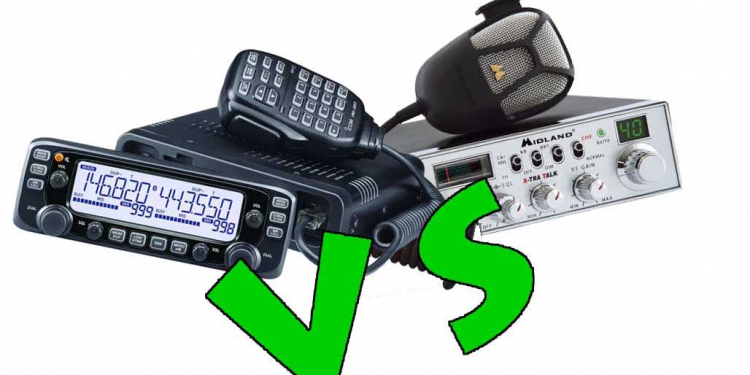While there are a number of similarities between CB and Ham, there are also some things that set them apart. If you’re considering a jump into the world of Amateur Radio (Ham), this is your guide to the most notable differences between CB and Ham radio.
Table of Contents
Range
While CB radio has the advantage of greater range, the range is significantly better on Ham radio. One great thing about Ham radios is their ability to reach areas that aren’t normally accessible by CB radios. This includes the ability to communicate across oceans, mountain ranges, and even across countries. In addition, many CB radios are not FCC-regulated, unlike Ham radios that must comply with FCC regulations.
Location
Hams on average might have larger antennas hanging outside their house and they might have a transmitter that is 100 watts or more. CBs are usually used inside a car or truck only, but radios like HAMs can be installed in your home as well. Different frequencies are used for each technology and they are not compatible with each other. Hams are typically used in a stationary way. Even though you can use this technology in your car, it really isn’t useful if you are moving around a lot. Ham radios were originally designed for people who were not always on the move, for example, coast guard members who are stationary at a dock would need an alternate line of communication besides just the CB. If there wasn’t a good line of sight to their truck or base, then they could enjoy the greater range that comes with a HAM radio.
Power
You can purchase the most powerful CB ever made, while the most powerful Ham radio available to the public maxes out at around 35W.
The most popular transceivers in CB are the 20W and 40W handhelds, while anything more than 10W is considered overkill for Amateur Radio use. Feel free to check this page to learn more about the ham and CB radios
Cost
CB radios are cheaper than HAM radio radios. CB radio radios are relatively cheap, starting at around $100 or less. While most CB radios have 10 channels, some consumer models have as many as 40 channels. HAM radio radios can also be relatively cheap, but they can get quite expensive. While a basic base model HAM radio costs around $100, more sophisticated models with better sound quality can cost up to $1000 or more.
This is especially true if you plan to use the radio for emergency broadcasting. In this case, demand for the devices is high, so a shortage tends to drive prices higher. On top of this, HAM radio radios can’t be imported into the United States, so you have to jump through a couple of hoops to get one. It takes time and effort, but in the end, you’ll have a unique device that not everyone else will have.
CB and Ham radios are regulated differently.
Although there is no FCC license required for CB, you must have one in order to operate a Ham radio. The FCC license also allows you more power and better frequencies to use, which might come in handy if you’re trying to make out transmissions from a long distance away from your location. The limitations placed on CB are somewhat out of date – CB radios were initially designed with 20 channels, but there have been 40 channels available for decades now.
CB is all voice while ham is voice and data
CB is line-of-sight while ham can go further distances due to the longer wavelength, CB has the potential to interfere with other devices while ham radios can be set and controlled to certain channels, CB is only intended for local communication while ham allows a person to person contact around the world, etc.
Ham radio has a much longer history.
CB radio was introduced in 1946, and it originally served as a military tool to communicate in combat. The first form of Ham radio dates back to 1895 when Guglielmo Marconi demonstrated the use of radio waves for communication. While both technologies still exist, CB radio is much more common today. In addition to the experience and historical context of ham radio, there are several technical differences worth noting. Acquisition methods in CB vs. Ham radio are very different. A CB radio is handheld, making it small and easy to take with you no matter where you go. Ham radios can be used on boats or inside cars, but they must be plugged into an antenna that extends outside the car in order to work properly.


















